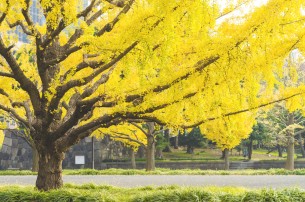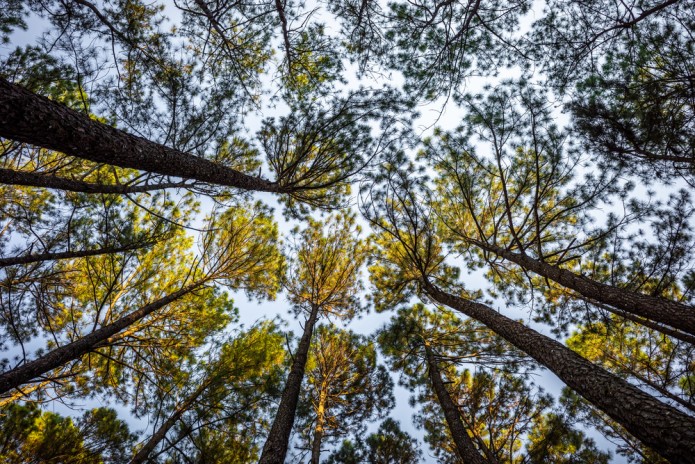Bold theories about crown shyness
I have a thing for trees. I’m a fan. An admirer. If trees were in a rock band, I’d follow them from city to city and stand in the front row of every concert.
My thing for trees is not unlike other people’s attraction to seashells or sunsets, butterflies or beaches. For many of us, there’s a part of the natural world that captivates and demands attention. I gravitate to tree pictures and paintings. My kids regularly roll their eyes when I’m driving and suddenly point a finger and demand they look at an especially pretty tree.
My tree thing goes way back, and my dad probably has something to do with it. He was a professional tree trimmer and sometimes took me along to job sites with him when I was a kid. Every year in the fall, he’d drive the whole family by a certain tree on our way home from church on Sundays. It was a huge Gingko tree, and I remember the way its fan-shaped leaves got lighter each Sunday when we drove by.  Then one day, we gasped when we turned onto that street because each leaf had suddenly flamed into a gorgeous gold.
Then one day, we gasped when we turned onto that street because each leaf had suddenly flamed into a gorgeous gold.
“Beautiful,” murmured my dad.
“Incredible,” I agreed. We both gaped at it, falling silent. That tree was practically a celebrity in my mind because it was the one tree that always impressed my dad, who spent his workdays among the town’s treetops.
Because of this tree thing, I stopped scrolling yesterday when I spotted an article in my news feed about a phenomenon known as “crown shyness.” It’s when the tops of trees – the crowns – don’t touch each other. Certain types of trees (including Eucalyptus, Lodgepole Pines and Black Mangrove) leave a little gap all the way around the crown. When viewed from below, these trees look like they’ve been outlined with a tiny sliver of sky.
You’ll want to google the phrase “crown shyness” to see a photo, since most of the trees in your neighborhood probably love to crowd each other’s crowns.
So why do some trees keep their branches to themselves? No one knows for certain, but there are three theories.
Number 1: The trees leave gaps to avoid catching each other’s insects and diseases. (This means that trees figured out the concept of social distancing long before people did.)
Number 2: By not crowding each other, trees allow more light to penetrate down into the forest which helps organisms grow. Tree tips have light receptors that determine another tree’s nearby location, so it stops growing to maximize its light source.
Number 3: This theory says that wind makes the crowns of trees bump into each other, which snaps off the ends of branches. The natural abrasion from all that swaying, tangling and bumping leaves gaps between the trees.
As is often the case, scientists aren’t yet sure which theory is correct or if multiple theories explain why some trees do this. But after looking at photos of crown shyness, I noticed how they look similar to photos of human cells under a microscope – like an incredibly detailed creation designed to sustain life and help it flourish.
Perhaps God tucked lessons for all of us among these mysterious treetops: Stand together in strength. Cooperate with one another in peace. And give people just enough space so you won’t rub each other the wrong way.
Gwen Rockwood is a syndicated freelance columnist. Email her at gwenrockwood5@gmail.com. Her book is available on Amazon.

